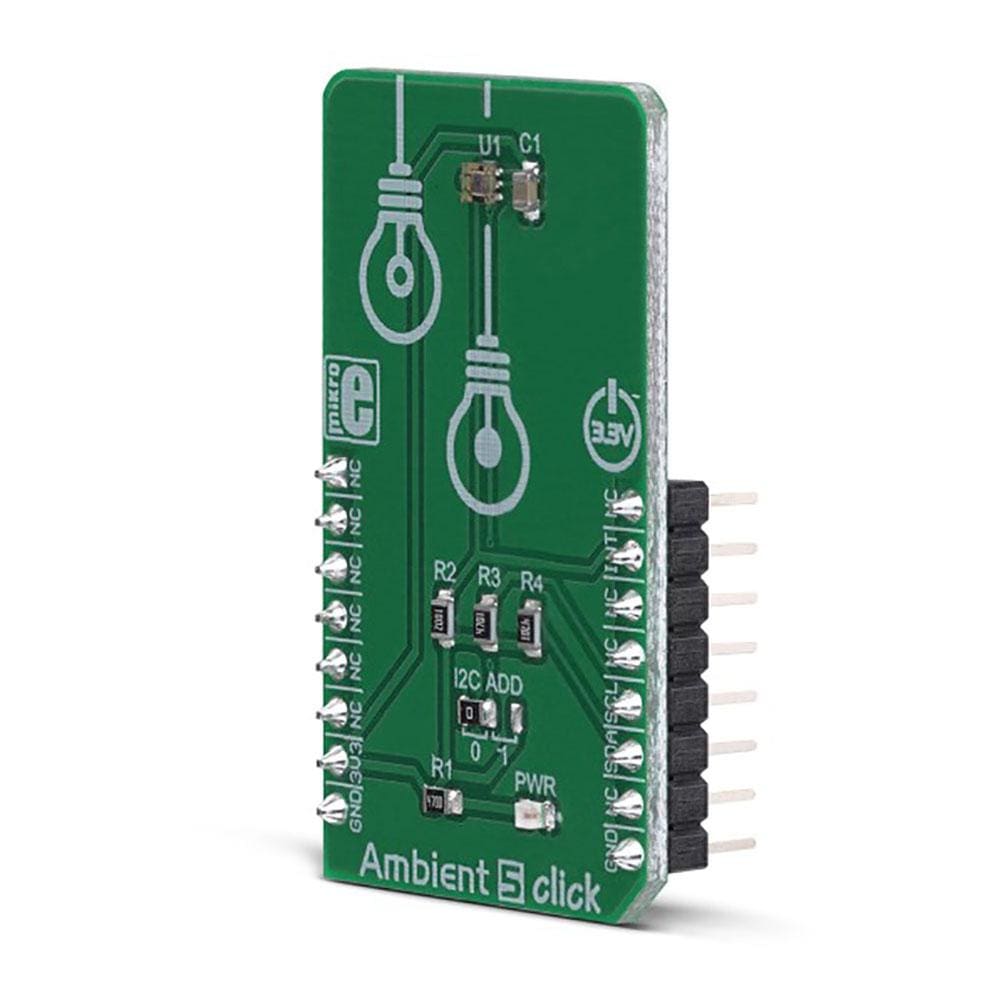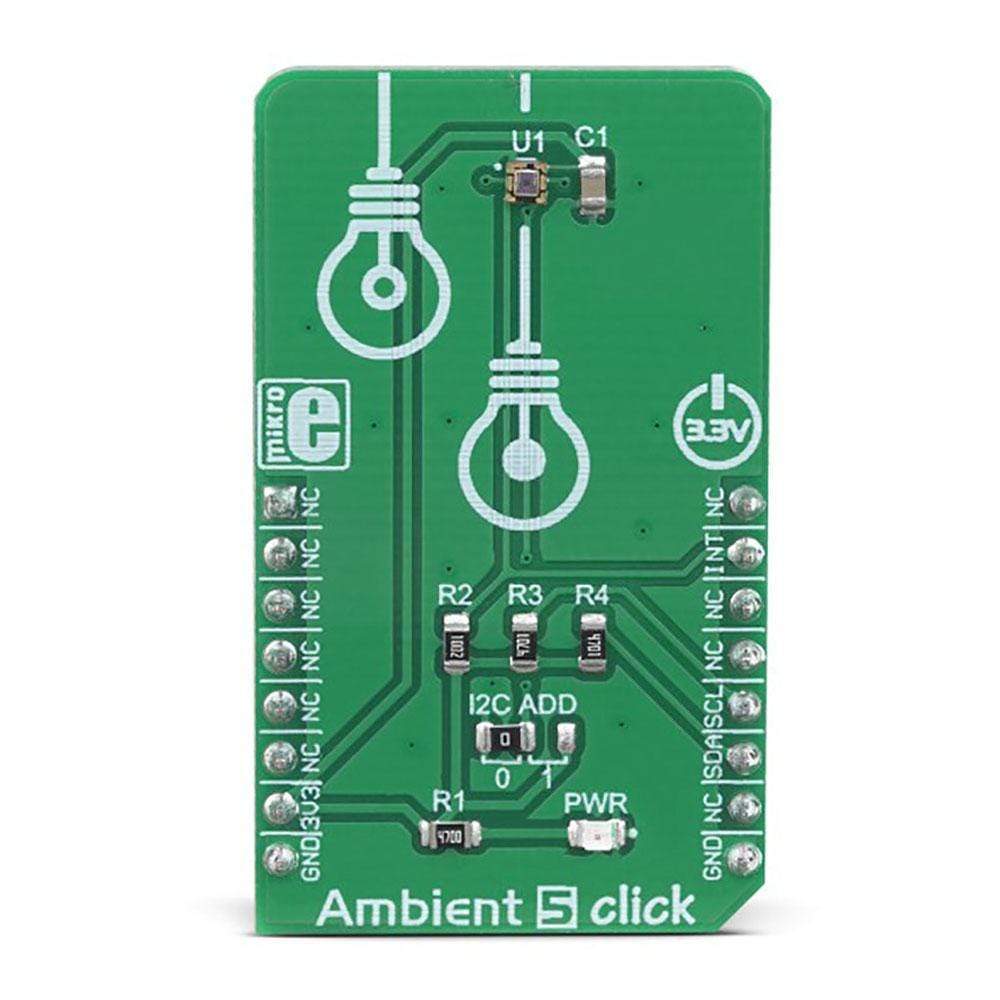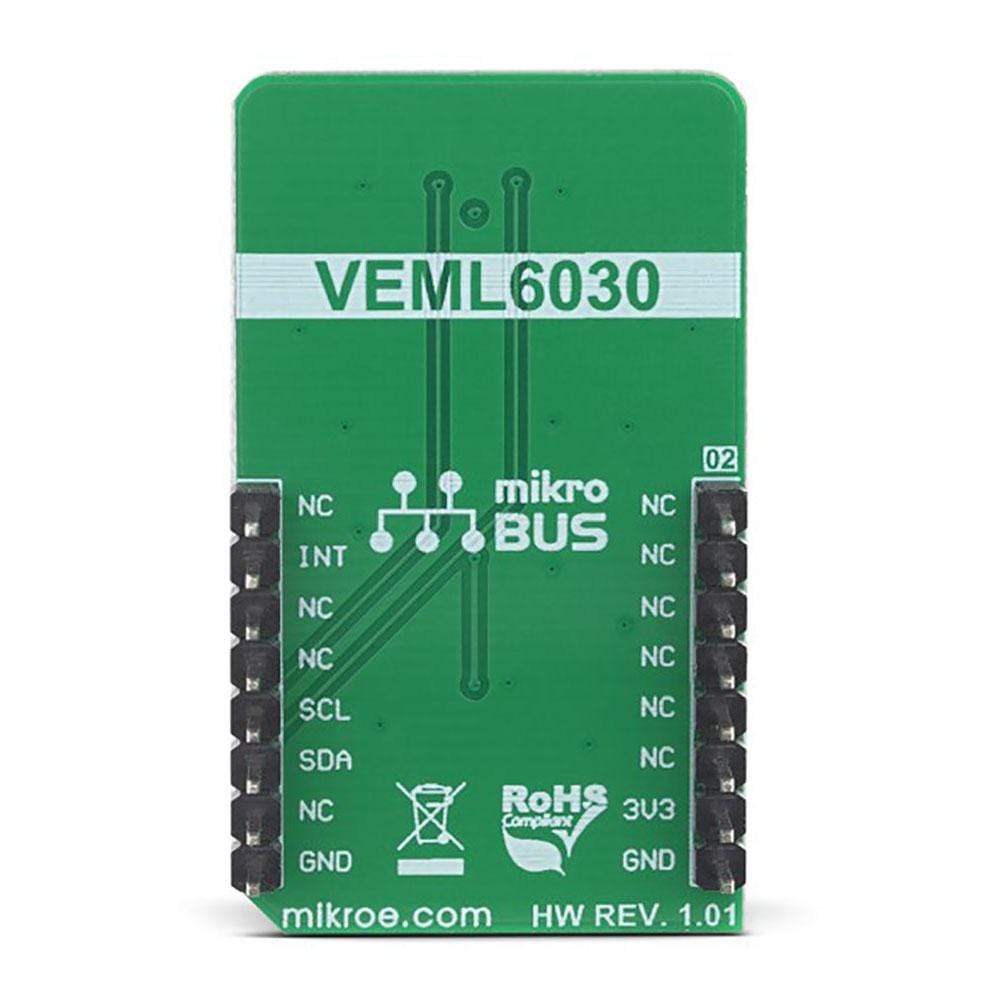



Overview
The Ambient 5 Click Board™ can sense the intensity of the ambient light, providing measurement data in a digital format, over the I2C interface. It utilises the VEML6030, a miniature ambient light sensor (ALS) that occupies only 2x2 mm of space. Packed in a small transparent casing, this sensor offers a lot of features.
Thanks to its 16-bit dynamic range, it can be used in very dim, but also in very bright lighting conditions. A Filtron technology provides spectral response close to a real human eye. The flicker noise rejection algorithm improves accuracy, while excellent thermal compensation ensures consistent readings.
Downloads
Das Ambient 5 Click Board™ kann die Intensität des Umgebungslichts erfassen und liefert Messdaten in einem digitalen Format über die I2C-Schnittstelle. Es verwendet den VEML6030, einen Miniatur-Umgebungslichtsensor (ALS), der nur 2 x 2 mm Platz einnimmt. Dieser Sensor ist in einem kleinen transparenten Gehäuse untergebracht und bietet zahlreiche Funktionen.
Dank seines 16-Bit-Dynamikbereichs kann es bei sehr dunklen, aber auch bei sehr hellen Lichtverhältnissen verwendet werden. Eine Filtron-Technologie sorgt für eine spektrale Reaktion, die dem eines echten menschlichen Auges nahe kommt. Der Algorithmus zur Unterdrückung von Flimmerrauschen verbessert die Genauigkeit, während eine hervorragende Wärmekompensation konsistente Messwerte gewährleistet.
| General Information | |
|---|---|
Part Number (SKU) |
MIKROE-3320
|
Manufacturer |
|
| Physical and Mechanical | |
Weight |
0.018 kg
|
| Other | |
Country of Origin |
|
HS Code Customs Tariff code
|
|
EAN |
8606018714278
|
Warranty |
|
Frequently Asked Questions
Have a Question?
Be the first to ask a question about this.




